Chinese Name: Spring Festival
English Name: Spring Festival, Chinese New Year, Lunar New Year
Other Names: Suishou, Xinchun, Xinnian, Guonian, Da Nian
Occurrence: The first day of the first lunar month
Type: One of China’s four major traditional festivals
Region: China, East Asia, Southeast Asia, and other areas with large Chinese communities
Origin: Shun ascended to the throne and led his subordinates in offering sacrifices to heaven and earth
Activities: House sweeping, staying up late, New Year’s greetings, pasting Spring Festival couplets, setting off firecrackers, giving out lucky money, etc.
Food: Laba porridge, rice cakes, dumplings, spring rolls, Yuanxiao (glutinous rice balls)
Meaning: The beginning of the Lunar New Year
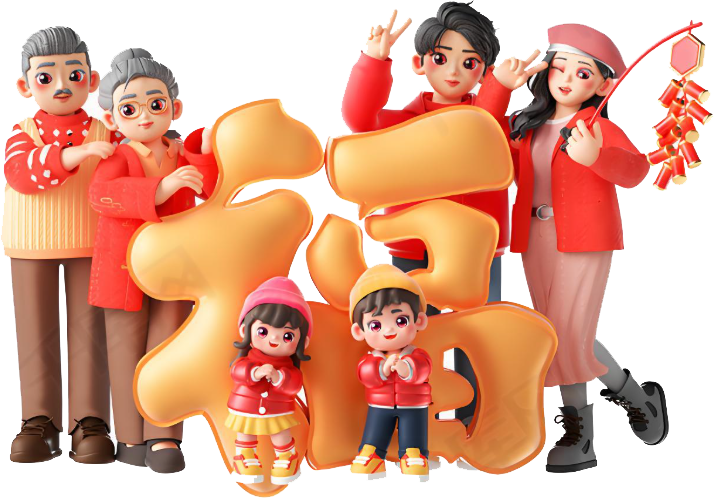
The Spring Festival is one of the most solemn and distinctive traditional festivals in China. It generally refers to New Year's Eve and the first day of the first lunar month, the first day of the lunar year, commonly known as the Spring Festival. However, among the general public, the traditional Spring Festival extends from the La Festival on the eighth day of the twelfth lunar month or the Kitchen God Festival on the twenty-third or twenty-fourth day of the twelfth lunar month to the fifteenth day of the first lunar month, with New Year's Eve and the first day of the first lunar month as the climax. During the Spring Festival, both the Han Chinese and many ethnic minorities in my country hold various celebrations. These activities primarily focus on worshipping gods and Buddhas, paying homage to ancestors, getting rid of the old and welcoming the new, welcoming good fortune, and praying for a good harvest. These activities are rich and varied, imbued with strong ethnic characteristics.
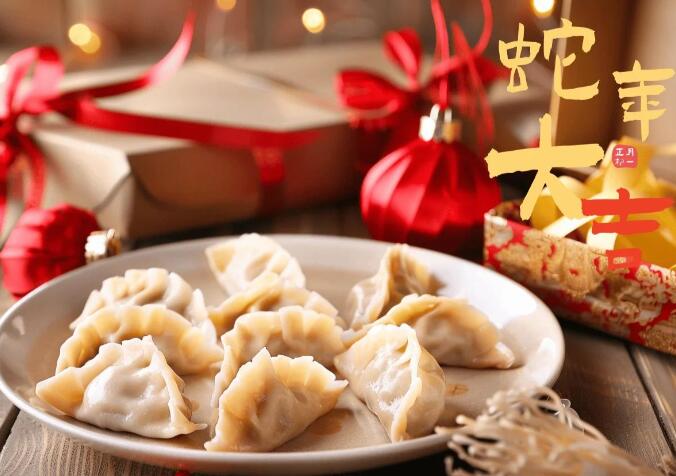
Eating dumplings for New Year's Eve dinner is a tradition in northern China, but customs vary from place to place. Some regions eat dumplings on New Year's Eve, others on the first day of the Lunar New Year. In some mountainous areas of northern my country, there's a custom of eating dumplings every morning from the first to the fifth day of the Lunar New Year. Eating dumplings is a unique way to express wishes for good fortune and luck as people bid farewell to the old and usher in the new. According to ancient Chinese timekeeping, the time between 11 p.m. and 1 a.m. is known as the "Zi" hour. "Jiaozi" (jiaozi) is the moment when the new year merges with the old. Dumplings symbolize the transition from one year to the next, and eating dumplings during the Spring Festival is considered auspicious. Furthermore, dumplings are shaped like ingots, and making them symbolizes enveloping good fortune, while eating them symbolizes a prosperous life.
China's New Year customs have a long history, and diverse New Year traditions have emerged across the country, each distinct from the north to the south, each with its own unique characteristics. While customs vary from region to region, preparing New Year goods and giving gifts are nearly universally essential for the Lunar New Year. Purchasing New Year goods, including food, clothing, accessories, household items, stickers ("New Year red"), and gifts ("New Year greetings"), is collectively known as "Nianhuo," and the process of purchasing these goods is known as "doing New Year's goods." Doing so is a key part of the Chinese New Year celebrations. Cutting New Year's Meat The folk proverb, "On the 26th day of the twelfth lunar month, cut New Year's meat," refers to the fact that this day is primarily devoted to preparing meat for the Lunar New Year. The inclusion of "cutting New Year's meat" in New Year's ballads stems from the fact that in agrarian societies, the economy was underdeveloped, and people could only enjoy meat during the annual New Year festival, hence the term "Nianrou."
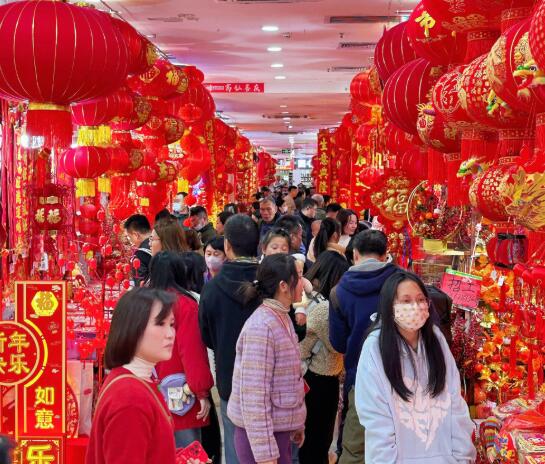
The folk custom of worshipping the Kitchen God stems from the ancient custom of fire worship. As the Shi Ming (Explanation of Names) states: "Kitchen God. Creation, the creation of food." The Kitchen God's duties were to control the stove fire and manage food. This later expanded to include observing the good and evil of the people and determining blessings and disasters. The Kitchen God worship tradition has a history of thousands of years in Chinese folklore, and belief in the Kitchen God reflects the Chinese people's pursuit of the dream of having enough food and clothing.
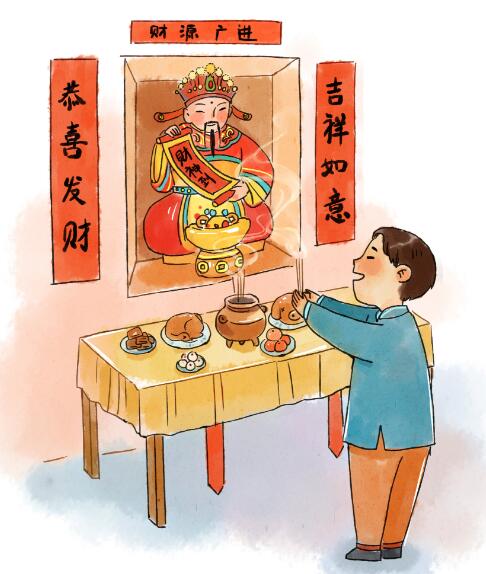
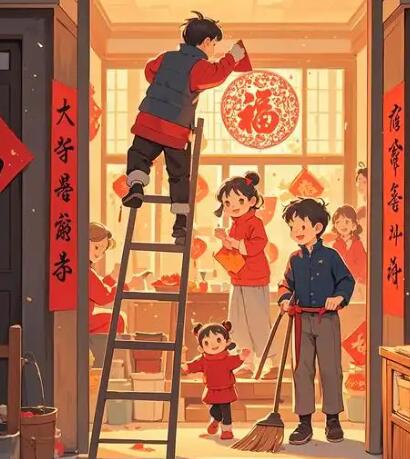
On the 28th, 29th, or 30th day of the lunar year, every household puts up "New Year Red" (a general term for Spring Festival couplets, door gods, New Year paintings, blessing characters, horizontal scrolls, window decorations, and other items. Because these are red, festive elements worn during the Lunar New Year, they are collectively referred to as "New Year Red"). Sweeping the House "On the 24th, sweep the house." According to the "Lüshi Chunqiu," the custom of sweeping the house during the Spring Festival has existed in my country since the Yao and Shun eras. According to folklore, because "dust" (chen) and "old" (chen) sound similar, sweeping the house during the Spring Festival means "getting rid of the old and ushering in the new." The purpose is to sweep away all bad luck and misfortune. This custom embodies people's desire to break with the old and usher in the new, and to bid farewell to the old and welcome the new. Every Spring Festival, every household cleans the house, washing utensils, taking apart and washing bedding and curtains, sweeping the courtyard, dusting off dust and cobwebs, and dredging open and underground drains. Everywhere is filled with the joyful atmosphere of cleaning and welcoming the New Year with a clean and tidy atmosphere.
New Year's Eve dinner, also known as New Year's dinner, reunion dinner, etc., specifically refers to the family dinner on New Year's Eve at the end of the year. New Year's Eve dinner originated from the ancient year-end sacrificial ritual, which is to worship the gods and ancestors and then reunite for dinner. New Year's Eve dinner is the highlight of the New Year. It is not only rich and colorful, but also very particular about the meaning. Before eating the reunion dinner, people worship the gods and ancestors, and only after the worship ceremony is completed can they start eating. The table usually includes chicken (symbolizing good luck [80]), fish (symbolizing surplus every year), dried oysters (symbolizing good business), hair algae (symbolizing wealth), bean curd (symbolizing abundance), lotus root (symbolizing intelligence), lettuce (symbolizing wealth), sausage (symbolizing longevity), etc. to seek good luck. The Chinese New Year's Eve dinner is a family reunion dinner. This meal is the most sumptuous and important dinner at the end of the year. Staying up late on New Year's Eve Stay up late on New Year's Eve is one of the most important New Year customs, and the custom of staying up late has a long history. The earliest record of this custom can be found in Zhou Chu's "Fengtuzhi" in the Western Jin Dynasty: On New Year's Eve, people exchange gifts, which is called "giving gifts to the old year"; they invite each other to drink and eat, which is called "farewell to the old year"; the elders and the young gather together to drink and offer blessings, which is called "dividing the year"; and everyone stays up all night to wait for dawn, which is called "keeping the year." Since the Han Dynasty, the transition from the old year to the new year has generally occurred at midnight.
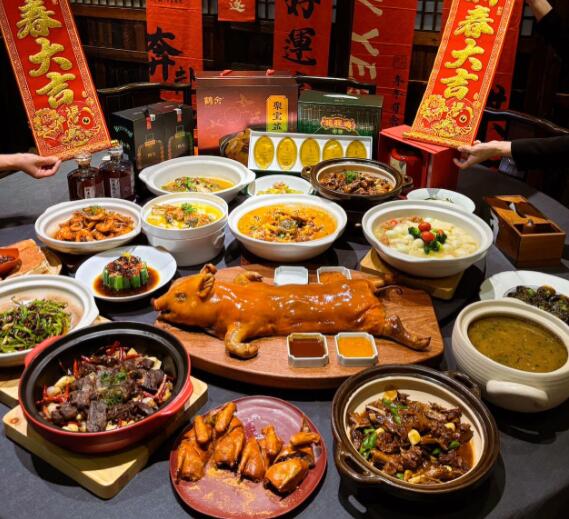
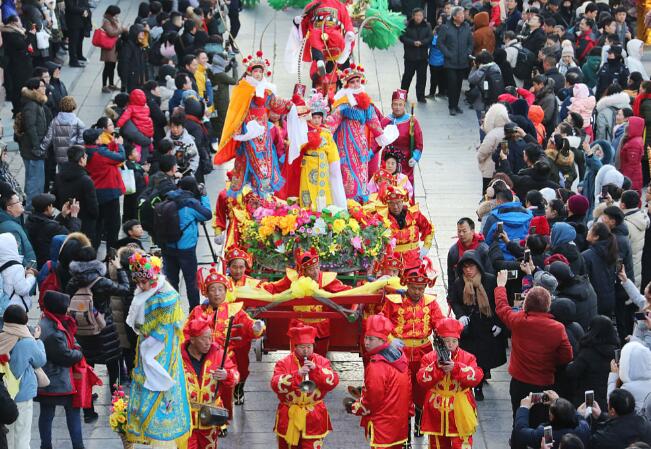
The "God Parade," also known as the "Sacred Vehicle Procession," "God Parade," "God Camp," "Bodhisattva Parade," "God Parade," "Annual Festival," "Welcoming the God," "Welcoming the New Year," "Spring Outing," "Pilgrimage," "Bodhisattva's Tour of the Country," "Carrying the God Statue," and "God Statue Procession," refers to the procession during the New Year or other festive occasions where people bring the deity's statue to the temple, place it in a sedan chair, and then carry it out of the temple grounds to receive incense and worship from the public. This symbolizes the deity's arrival among the people, visiting the village and blessing the community with peace. Along the way, the procession is accompanied by a variety of performances, including gongs and drums, suona, deity puppets, lion and dragon dances, floats, flags, lantern parades, eight-tone music, acrobatics, and band performances. It is a traditional folk activity that combines worship, prayer, celebration, and banquets. Temple Fairs Visiting temple fairs is a folk custom during the Spring Festival. The Cantonese Temple Fair and the Ditan Temple Fair in Beijing are considered two of China's two major temple fairs. It covers theme activities such as puppet gathering, Chinese unique skills, martial arts conference, Lantern Festival, etc., and contains rich content such as blessing culture, folk culture, food culture, business and leisure culture.
During the Spring Festival, people visit relatives and friends to exchange New Year greetings. Starting on the second and third days of the Lunar New Year, people visit relatives and friends, exchange New Year greetings, and offer congratulations and blessings. New Year greetings are a way for friends and family to stay connected, exchange New Year greetings, and express their affection for one another and their best wishes for the new year.

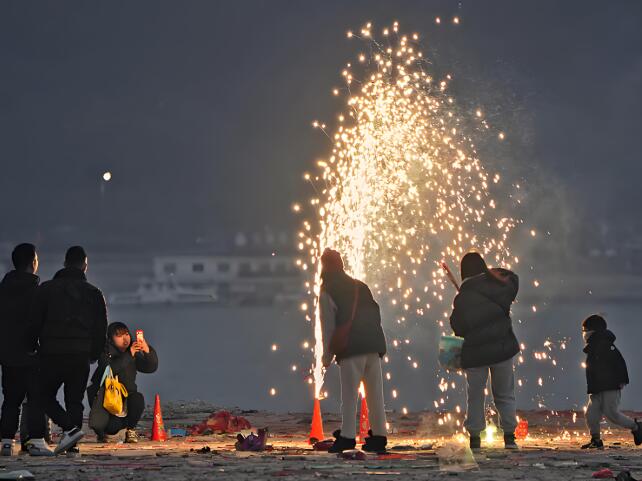
There's a Chinese folk saying, "Open the door with firecrackers." This means that upon the arrival of the new year, the first thing every household does is set off firecrackers, using the clatter of fireworks to bid farewell to the old and usher in the new. Firecrackers are a Chinese specialty, also known as "firecrackers," "firecrackers," "firecrackers," and "firecrackers." Their original purpose was to welcome gods and ward off evil spirits. Later, their intensely festive nature evolved into a symbol of bidding farewell to the old and welcoming the new. They create a joyous and lively atmosphere and are a form of festive entertainment, bringing joy and good fortune. Shengwanghuo On the fifteenth day of the first lunar month, the Lantern Festival, torches and bonfires are lit in the courtyard. This is known as "Shengwanghuo" or "Lighting the precious firewood." Modern folk custom often use piles of straw or firecracker paper. The stronger the fire, the better, symbolizing the burning away of past misfortunes and the ushering in new beginnings.